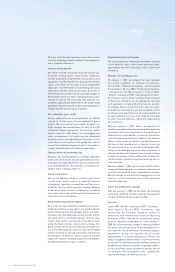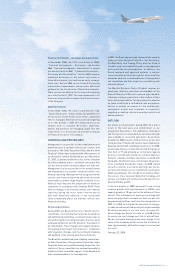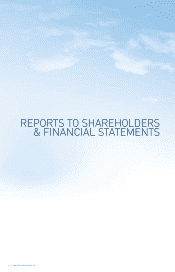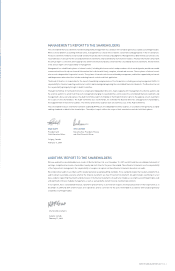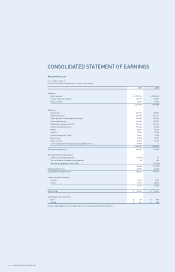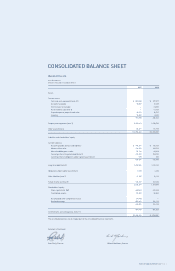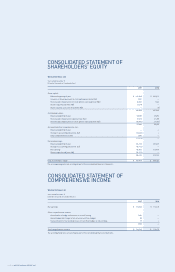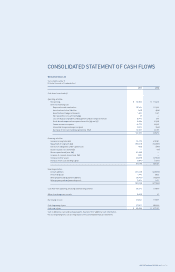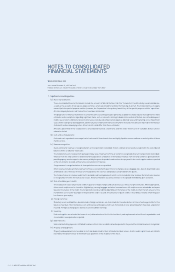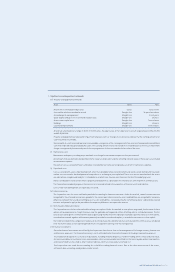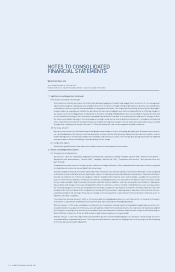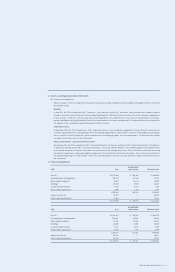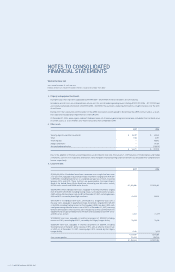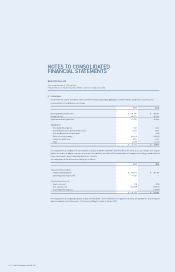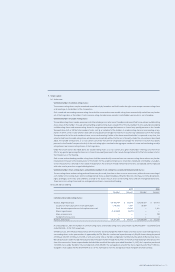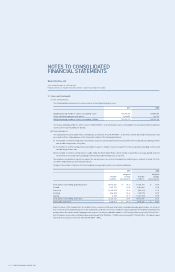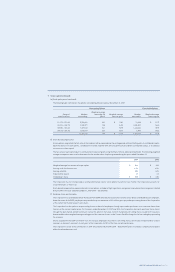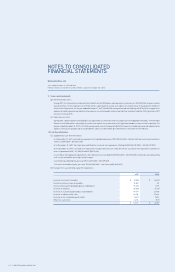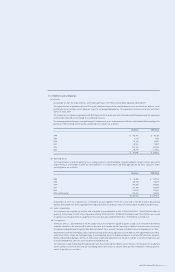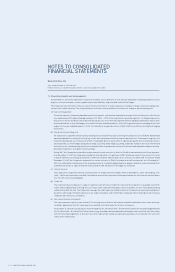Westjet 2007 Annual Report Download - page 50
Download and view the complete annual report
Please find page 50 of the 2007 Westjet annual report below. You can navigate through the pages in the report by either clicking on the pages listed below, or by using the keyword search tool below to find specific information within the annual report.
PAGE 48 WESTJET ANNUAL REPORT 2007
WestJet Airlines Ltd.
Years ended December 31, 2007 and 2006
(Tabular amounts are stated in thousands of dollars, except share and per share data)
NOTES TO CONSOLIDATED
FINANCIAL STATEMENTS
1. Signifi cant accounting policies (continued):
(m) Financial instruments (continued):
The Corporation formally documents all relationships between hedging instruments and hedged items, as well as its risk management
objective and strategy for undertaking various hedge transactions. This process includes linking all derivatives to specifi c assets and liabilities
on the balance sheet or to specifi c fi rm commitments or anticipated transactions. The Corporation also formally assesses, both at the hedge’s
inception and on an ongoing basis, whether the derivatives that are used in hedging transactions are highly effective in offsetting changes in
fair value or cash fl ow of hedged items. All derivative instruments, including embedded derivatives, are recorded on the balance sheet and
in the statement of earnings at fair value unless exempted from derivative treatment as a normal purchase and sale. All changes in their
fair value are recorded in earnings. If cash fl ow hedge accounting is used, the fair value of derivative instruments is included in accumulated
other comprehensive income with any ineffectiveness recorded in earnings. Any changes in the fair value to the extent effective are recorded
through other comprehensive income. See note 12 – Financial instruments and risk management for additional details.
(n) Per share amounts:
Basic per share amounts are calculated using the weighted average number of shares outstanding during the year. Diluted per share amounts
are calculated based on the treasury stock method, which assumes that the total proceeds obtained on the exercise of options and the
unamortized portion of stock-based compensation would be used to purchase shares at the average price during the period. The weighted
average number of shares outstanding is then adjusted by the net change.
(o) Comparative fi gures:
Certain prior-period balances have been reclassifi ed to conform to current period’s presentation.
2. Recent accounting pronouncements:
(a) Change in accounting policies:
On January 1, 2007, the Corporation adopted the following new Canadian accounting standards: Section 3855, “Financial Instruments –
Recognition and Measurement,” Section 3865, “Hedging” and Section 1530, “Comprehensive Income.” Prior periods have not
been restated.
Comprehensive income consists of changes in gains and losses on hedge settlements. Other comprehensive income refers to items recognized
in comprehensive income that are excluded from net earnings.
The new standard on Financial Instruments prescribes when a fi nancial asset, fi nancial liability or non-fi nancial derivative is to be recognized
on the balance sheet and at what amount, requiring fair value or cost-based measures under different circumstances. Financial instruments
must be classifi ed into one of these fi ve categories: held-for-trading, held-to-maturity, loans and receivables, available-for-sale fi nancial
assets or other fi nancial liabilities. All fi nancial instruments, including derivatives, are measured on the balance sheet at fair value except
for loans and receivables, held-to-maturity investments and other fi nancial liabilities, which are measured at amortized cost. Subsequent
measurement and changes in fair value will depend on initial classifi cation, as follows: held-for-trading fi nancial assets are measured at
fair value and changes in fair value are recognized in net earnings; available-for-sale fi nancial instruments are measured at fair value with
changes in fair value recorded in other comprehensive income until the investment is derecognized or impaired, at which time the amounts
would be recorded in net earnings. There were no changes to the measurement or presentation of the Corporation’s fi nancial assets or
liabilities at the date of adoption.
The Corporation selected January 1, 2003, as its transition date for embedded derivatives; as such only contracts or fi nancial instruments
entered into or substantively modifi ed after the transition date were examined for embedded derivatives.
Effective January 1, 2007, and as provided for on transition, the Corporation selected a policy of immediately expensing transaction costs
incurred related to the acquisition of fi nancial assets and liabilities. Under the transitional provisions, the Corporation retrospectively adopted
this change in accounting policy without the restatement of prior-period fi nancial statements and incurred a charge to retained earnings of
$36,612,000 (net of future tax of $16,321,000) related to legal and fi nancing fees on long-term debt.
Effective January 1, 2007, the Corporation transferred $13,420,000 of unamortized hedging losses related to certain leased aircraft to
accumulated other comprehensive income. The Corporation will continue to amortize the hedging losses to net earnings over the remaining
term of the previously related hedged item.


